
WILD THING
Hi folks, I’m back with another new wine. At least for me. It’s not a wine that we hear much about primarily because of its past reputation as not worthy of our attention. But, my curiosity got the best of me as I was perusing different varietals to write about for our next exploration. So here it is, Pinotage, from South Africa. I think it has an interesting story.
WHEREFOR PINOTAGE
Pinotage actually came on the wine scene relatively recently. It was intentionally created in 1925 by the first Professor of Viticulture, Abraham Izak Perold, at Stellenbosch University. He was looking to create a vine, and wine, that would have the delicious qualities of Pinot Noir, which is notoriously difficult to grow (let alone in that warm climate) with the robust qualities of the heat loving Cinsaut grape. You need to know two things about Cinsaut in South Africa. Unlike in France, it is spelled without the L (Fr = Cinsault). And, it is mostly called Hermitage, an allusion to its Rhône heritage. I know, a bit confusing, but instrumental to understand how the name Pinotage came about. Pinot (…Noir) and (Hermit…) age. Oh, I get it now!
So Professor Perold created an intraspecific cross of these two varieties of Vitis vinifera (the botanical name for the European fine wine vines). He then planted four seeds from this cross in his university home garden where he tended them for two years. Then he moved going off to another job at a wine cooperative and, evidently, forgot about them. What?? Fortunately, after another couple of years, Dr. Charles Niehaus, a young lecturer from the University who knew about these vines, happened to be passing by just as a crew from the university was about to clean up the yard. He saved the young vines in the nick of time and then brought them to Elsenburg Agriculture College. It was here that the first batch of wine was made and christened Pinotage. But not until 1941 which was also the year of Perold’s death. He never got to taste his own creation. Ain’t life ironic.
GROWING FACTORS
Eventually Pinotage became the third most planted red grape in South Africa after Cabernet Sauvignon and Syrah (called Shiraz here). It is considered South Africa’s signature wine. Even at that, it only claims 6-7% of vineyard plantings. Small amounts are grown in a few other countries like New Zealand, Canada, Brazil, Israel, the U.S. and Zimbabwe. (Barely. Just try to find them!) It is a divisive grape even in its own country. For so long it was made poorly while also suffering setbacks from the phylloxera infestation in the late 1800’s and from the ensuing political problems of the following century. While the vines are vigorous, heat tolerant and easy to grow, the thick skinned grapes ripen early with high sugar levels, sometimes too high, at the expense of retaining acid levels. It can easily make wines that are too tannic, too flaccid and over extracted which causes them to taste like burnt rubber. Pinotage has struggled with a bad rep for so many years because of inexperienced winemakers who primarily used it to make bulk inexpensive jug wine and poor growing techniques. I guess you could say this grape turned out to be the surprise child of two refined parents that is unlike either of them. And no one knew quite what to do here. This explains why even though Pinotage is considered a New World wine it is often described as Old World meets New World. It’s a wild child.
It wasn’t until 1951 that enough experimental vines were planted to make a proper go of it. In this same year vines were also planted at the Kanonkop Estate by Paul Sauer and Diane Rossouw, who made wines that later rose to great fame and could mature up to 25 years. Wow, go Pinotage!
See, the story gets better.
CHAMPION WINE
Pinotage received its first official recognition when it became the Champion Wine at the Cape Young Wine Show of 1959. It was released under the Kanonkop Lanzerac label which was the first bottling of a monovarietal Pinotage. This success was repeated in 1961. The possibility of good Pinotage finally became a reality. This prompted a wave of plantings in the 1960’s and, voilá, South Africa had its signature wine!
Now other winemakers had to figure out how to make good Pinotage. But the varietal still struggled with inconsistant quality for quite a while. And it was, and is still, produced in quite an array of styles. It can be an easy drinking quaffing wine, or a fortified “port” style, rosé, a barrel aged wine intended for cellaring or even a red sparkling wine. In the “Cape blends” 30% -70% must be Pinotage.
As I said, Pinotage grapes are thick skinned and this leads to naturally high tannins. They are also high in anthrocyanin creating its dark inky color and all the healthy stuff that makes red wine good for you. Because this wine is so volatile, it can have a problem with too much acetic acid causing it to smell like nail polish remover or raspberry vinegar if not handled properly. Eww. But, since the 1990’s winemakers have been experimenting with long and cool fermentations to tame these volatile esters as well as exposure to French and American oak. We only want to drink good wine.
A TASTE FOR PINOTAGE
Keeping with its wild child reputation, it also has its own kind of taste. A little unusual and perhaps not to everyone’s liking. But that can be said of other wines, too. Mostly it is described as being medium bodied, smoky, herbaceous, earthy and distinctly savory with notes of wild game. It has fruit flavors anywhere from a juicy plumminess, to raspberry, blueberry, and cherry to dark fruit like black plum and blackberries. Some even have notes of banana, apricot and tropical fruit. Hmmm…I guess It depends on the style. Oh, and the lighter styles are good a little chilled. I’ll let you know what I think when I get to the tasting.
There’s a popular Sunday barbecue at the households in South Africa called a braai
(rhymes with cry). The food in this country is a blend of Dutch, English and Malay cookery. (The last one due to Malayan slaves.) And there are many game meats here like guinea fowl, several types of antelope and deer, pork, lamb, beef and ostrich. This is where Pinotage is at its best. One could liken it to Zinfandel from California and how it is so popular as a paring for barbecue. Same kind of thing.
JUSTIFIABLY PINOTAGE
Just one more note, WO means Wine of Origin. It appears together with the name of the production area, such as Stellenbosch, Durbanville or Robertson on a label. It confirms that 100% of the grapes in that bottle come from that specific demarcated area. Like our American Viticultural Areas, AVA’s.
Here’s what I tasted:
Spier Gables Pinotage 2017
WO Stellenbosch 14% abv $35.99
More Old World style here. Deep garnet in color with a nose of deep dark fruit, a little game, cherry and garrigue followed by flavors of red cherry, dried crushed herbs, baking spices, more black fruit and a long finish of something lighter and fruity like cranberry jelly. It’s nice and dry with definite tannins.
Tread Lightly Pinotage 2017
WO Coastal Region 14% abv. $12.99
Garnet colored. The nose on this one is definitely gamey mixed with some sweet fruit. Also fruit forward on the first sip with very ripe sweet cherry. It’s earthy and rustic with more flavors of juicy black fruit. Reminded me a little of the NW Cellars 100% Mourvèdre we had a few years back.
M~A~N Family Wines Bosstok Pinotage 2018
WO Coastal Region 13.5% abv. $11.99
Ruby in color. Another rich nose of cooked cherries, ripe raspberries, hints of chocolate and coffee and, yes, a bit of that herbaceous earthiness. The palate is mildly sweet on the attack with some juicy ripe red plum followed by black tea then a nice flavor of sour cherry. With softer balanced tannins it is an easier drinker that I think would be good with spicy and smoked meats.
Southern Right Pinotage 2019
WO Walker Bay 13.5% abv 31.99
Also more ruby in color with aromas of sweet spice, red cherry lifesaver, a bit of mocha and a nice touch of citrus pith. Flavors of red plum, woody herbs like rosemary and thyme and oregano, some baking spices and, oh, some red hots! This wine, with good structure, seemed more classic and restrained to me. Elegant. It literally changed in the glass as I was tasting it. In a good way!
Ok, then. To sum up, I liked this unusual wine. Overall they tasted as forewarned, herbaceous, gamey, lots of red fruit, bramble, dark fruit, bitter and sweet. It made me look at a different style of wine that I wouldn’t know about but for trying. And that’s what I think you should do too.
Wild thing, I think I love you. But I wanna know for sure…
Until next time,
Cheers,
Peg


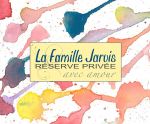



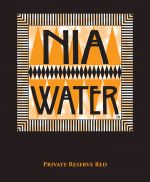

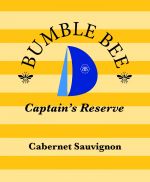
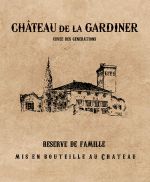
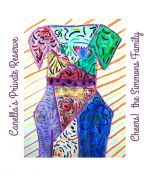
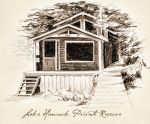
0 Comments